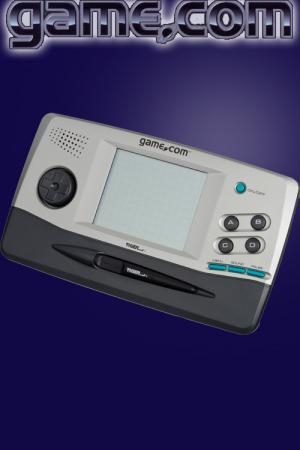
Game.com
Game.com Specifications
| Manufacturer: | Tiger Electronics |
| Developer: | Tiger Electronics |
| CPU: | Sharp SM8521 |
| Sound: | Two 4-bit waveform generators, noise generator, 8-bit PCM channel |
| Medium: | Cartridge |
| Display: | 200 x 160 2-bit 3.5" reflective grayscale LCD |
The Game.com is a handheld game console released by Tiger Electronics in September 1997. It featured many new ideas for handheld consoles and was aimed at an older target audience, having PDA-style features and functions such as a touchscreen and stylus. Unlike other handheld game consoles, the first Game.com console included two slots for game cartridges and could be connected to a 14.4 kbit/s modem. There were 21 games released for the Game.com, as well as 9 known unreleased.
The Game.com is a fifth-generation handheld game console released by Tiger Electronics on September 12, 1997. A smaller version, the Game.com Pocket Pro, was released in mid-1999. The first version of the Game.com can be connected to a 14.4 kbit/s modem for Internet connectivity, hence its name referencing the top level domain .com. It was the first video game console to include a touchscreen and the first handheld console to include Internet connectivity.
Tiger Electronics had previously introduced its R-Zone game console in 1995 – as a competitor to Nintendo's Virtual Boy – but the system was a failure. Prior to the R-Zone, Tiger had also manufactured handheld games consisting of LCD screens with imprinted graphics.
By February 1997, Tiger was planning to release a new game console as a direct competitor to Nintendo's Game Boy. Prior to its release, Tiger Electronics stated that the Game.com would "change the gaming world as we know it," while a spokesperson stated that it would be "one of this summer's hits." The Game.com, the only new game console of the year, was on display at the Electronic Entertainment Expo (E3) in May 1997, with sales expected to begin in July. Dennis Lynch of the Chicago Tribune considered the Game.com to be the "most interesting hand-held device" on display at E3, describing it as a "sort of Game Boy for adults".
The Game.com was released in the United States on September 12, 1997, with a retail price of $69.95, while an Internet-access cartridge was scheduled for release in October. Lights Out was included with the console as a pack-in game and Solitaire was built into the handheld itself. The console's release marked Tiger's largest product launch ever. Tiger also launched a website for the system at the domain "game.com". The Game.com was marketed with a television commercial in which a spokesperson insults gamers who ask questions about the console, while stating that it "plays more games than you idiots have brain cells"; GamesRadar stated that the advertisement "probably didn't help matters much". By the end of 1997, the console had been released in the United Kingdom, at a retail price of £79.99.
The Game.com came in a black-and-white color, and featured a design similar to Sega's Game Gear console. The screen is larger than the Game Boy's and has higher resolution. The Game.com included a phone directory, a calculator, and a calendar, and had an older target audience with its PDA features. Tiger designed the console's features to be simple and cheap. The device was powered by four AA batteries, and an optional AC adapter was also available. One of the major peripherals that Tiger produced for the system was the compete.com serial cable, allowing players to connect their consoles to play multiplayer games. The console includes two game cartridge slots. In addition to reducing the need to swap out cartridges, this enabled Game.com games to include online elements, since both a game cartridge and the modem cartridge could be inserted at the same time.
The Game.com was the first video game console to feature a touchscreen and also the first handheld video game console to have Internet connectivity. The Game.com's black-and-white monochrome touchscreen measures approximately one and a half inches by two inches, and is divided into square zones that are imprinted onto the screen itself, to aid players in determining where to apply the stylus. The touchscreen lacks a backlight. The Game.com was also the first handheld gaming console to have internal memory, which is used to save information such as high scores and contact information.
As 1998 opened, the Game.com was considered the only remaining viable competitor for the Game Boy, and Tiger planned to emphasize the Game.com's internet capabilities in marketing, as well as release new games based on major films and Giga Pets.
Because of poor sales with the original Game.com, Tiger developed an updated version known as the Game.com Pocket Pro. The console was shown at the American International Toy Fair in February 1999, and was later shown along with several future games at E3 in May 1999. The Game.com Pocket Pro had been released by June 1999, with a retail price of $29.99. The new console was available in five different colors: green, orange, pink, purple, and teal.
Although it lacked color like its predecessor, the Pocket Pro was reduced in size to be equivalent to the Game Boy Pocket. The screen size was also reduced, and the new console featured only one cartridge slot. Unlike the original Game.com, the Pocket Pro required only two AA batteries. The Game.com Pocket Pro included a phone directory, a calendar and a calculator, but lacked Internet capabilities.
The Game.com Pocket Pro's primary competitor was the Game Boy Color. Despite several games based on popular franchises, the Game.com console line failed to sell in large numbers, and was discontinued in 2000 because of poor sales. The Game.com was a commercial failure, with less than 300,000 units sold, although the idea of a touchscreen would later be used successfully in the Nintendo DS, released in 2004.
Latest on Game.com
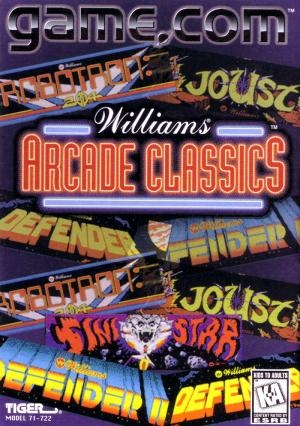
Williams Arcade Classics
Five of the greatest arcade hits of all time - now available in one portable collection: Joust, Defender, Robotron, Defender II (Stargate), SiniStar! ...
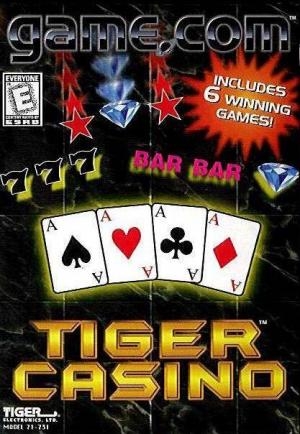
Tiger Casino
"Step in and place your bets. You've just entered the Tiger Casino, where you can test your luck at the classics: Video Poker, Video Black Jack, Roul...

Sonic Jam
Everyone's favorite hedgehog is at it again and he's jammin'! Join Sonic on his action-packed adventure. It's high-speed, non-stop fun as the best of ...
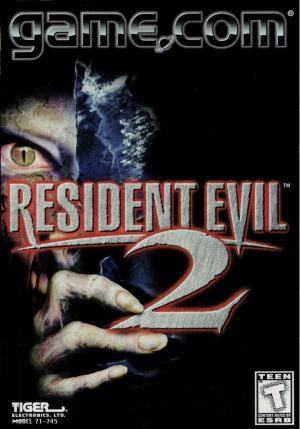
Resident Evil 2
Zombies have overtaken the city. It's now up to you, a sworn officer of the law, to stop them. It's one terrifyingly evil encounter after another. Can...

Mortal Kombat Trilogy
This successor to the arcade megahits features the meanest of the mean and the baddest of the bad. If you think you've mastered the moves and out-boss...
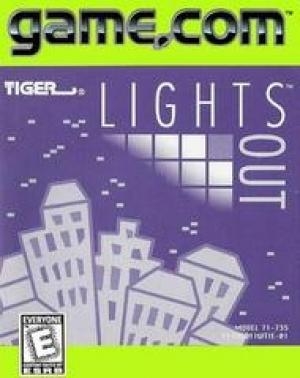
Lights Out
The goal of the puzzle is to switch all the lights off, preferably in as few button presses as possible. It was shipped free with the console.

Jeopardy!
IT'S ALL HERE: THE CHALLENGE, EXCITEMENT AND THRILL OF ONE OF AMERICA'S FAVORITE TV GAME SHOWS. TEST YOUR KNOWLEDGE WITH AUTHENTIC PUZZLES. THEN HONE...
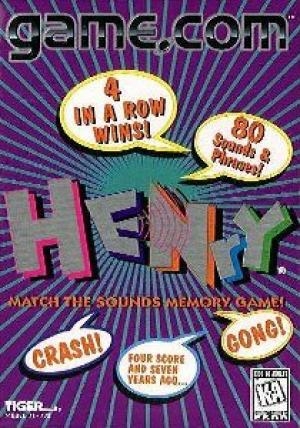
Henry
This is a match game using sound and pictures. You have 16 buttons with sounds and pictures under them, given a clue you have to match a sound and pic...
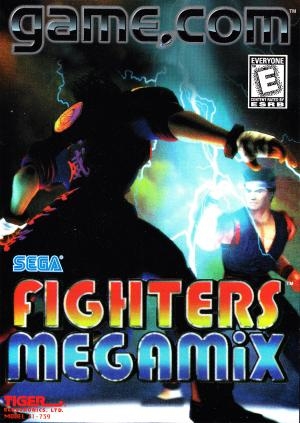
Fighters Megamix
It's Virtua Fighting 2 vs. Fighting Vipers! Two arcade smash hits, smashing into each other in the ultimate battle for supremacy. It's cutting edge co...
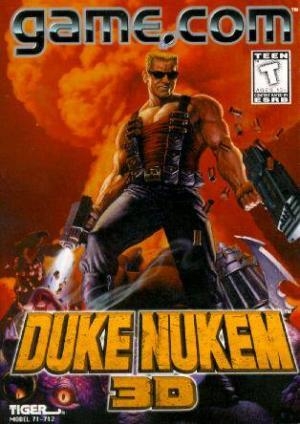
Duke Nukem 3D
Hi-octane action at your fingertips! It's up to Duke Nukem to save the planet. Pull out your shotgun and start blasting as storms of aliens gun for yo...